



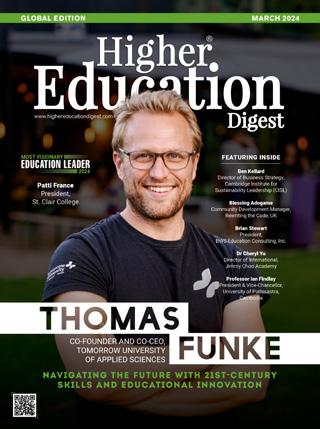
Managing Editor
Sarath Shyam
Consultant Editors
Dr. John Andrews
Emma James
Andrew Scott
Naomi Wilson
Stanly Lui
Joseph Alex
Creative Consultants
Charlie Jameson
Edwards Gonzalez
Branding & Marketing Partnerships
Jennifer Anderson
Alice Smith Lucy Jones
Anna Elza
Enquiry
admin@highereducationdigest.com
March 2024 Vol -
International Representation
admin@highereducationdigest.com
Americas 16192 Coastal Highway, Lewes, DE 19958, USA
Europe
27, Old Gloucester Street, London, WC1N 3AX, UK
Middle East & Africa
P.O. Box 48299, Dubai Silicon Oasis, Dubai, UAE
Asia-Pacific
Ramanashree Arcade, 18 MG Road, Bangalore – 560001, India
Higher Education Digest is a digital magazine published by Connecta Innovation Private Limited. All rights reserved. The opinions expressed in the content and pictures provided are those of the authors. They do not purport to reflect the opinions or views of the Connecta Innovation Private Limited or any of its members and we do not assume any responsibility. The publisher does not assume any responsibility for the advertisements, its content, pictures, and all representation of warranties made in such advertisements are those of the advertisers and not of the publisher.
Higher Education Digest is a Free Subscription digital magazine strictly not for sale and has to be strictly for internal private use only. Publisher does not assume any responsibility arising out of anyone printing copy of this digital magazine in any format and in any country and all matters related to that. Free Subscription

4 Higher Education Digest March 2024
6
3
Issue -
Visionary Voices in Higher Education
Visionary leaders have the ability to articulate a compelling vision for the future of the institution. This vision serves as a guiding light, steering the institution toward its goals and aspirations. By defining a clear strategic direction, visionary leaders ensure that the institution remains focused and aligned in its efforts.
In this post-modern era of higher education, visionary leaders serve as the driving force behind progress and innovation. These individuals possess a rare combination of foresight, passion, and determination, propelling their institutions toward excellence and shaping the future of learning.
This issue of Higher Education Digest is dedicated to celebrating the remarkable contributions of such leaders, highlighting their transformative impact on the educational landscape. At the forefront of this issue is Thomas Funke, Co-Founder and Co-CEO of Tomorrow University of Applied Sciences, whose unwavering commitment to merging education and entrepreneurship has
garnered widespread recognition. With a career spanning over 15 years, Funke’s journey embodies the spirit of visionary leadership, inspiring change and driving forward-thinking initiatives.
But the spotlight doesn’t stop with Funke. Within these pages, you’ll find a wealth of insight and inspiration from a diverse array of academic and industry leaders. Through opinion articles and exclusive interviews, they offer invaluable perspectives on the challenges and opportunities facing higher education today. From the role of technology in learning to the importance of fostering collaboration, these thought leaders share their vision for a brighter future.
As you delve into the stories within this issue, you’ll discover the power of visionary leadership to shape not only individual institutions but also the trajectory of higher education as a whole. Join us on this journey as we celebrate the pioneers driving innovation, fostering collaboration, and cultivating a culture of excellence in the world of higher education. Enjoy Reading.
 Sarath Shyam
Sarath Shyam
5 Higher Education Digest March 2024
MANAGING
EDITOR’S NOTE

THOMAS FUNKE
CO-FOUNDER AND CO-CEO, TOMORROW UNIVERSITY OF APPLIED SCIENCES
NAVIGATING THE FUTURE WITH 21ST-CENTURY SKILLS AND EDUCATIONAL INNOVATION
Higher Education Digest March 2024
COVER STORY
10
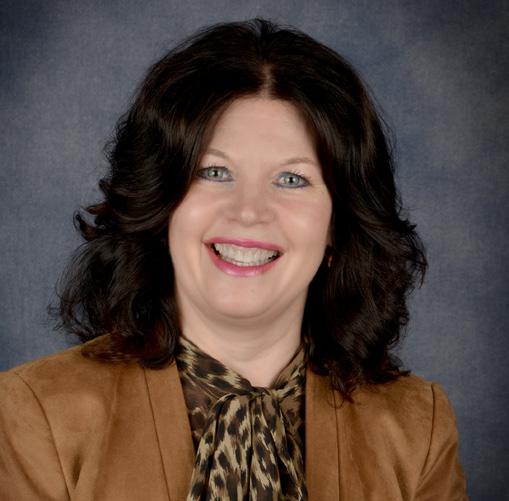
EDUCATION LEADER 2024 MOST VISIONARY 24
PATTI FRANCE President, St. Clair College
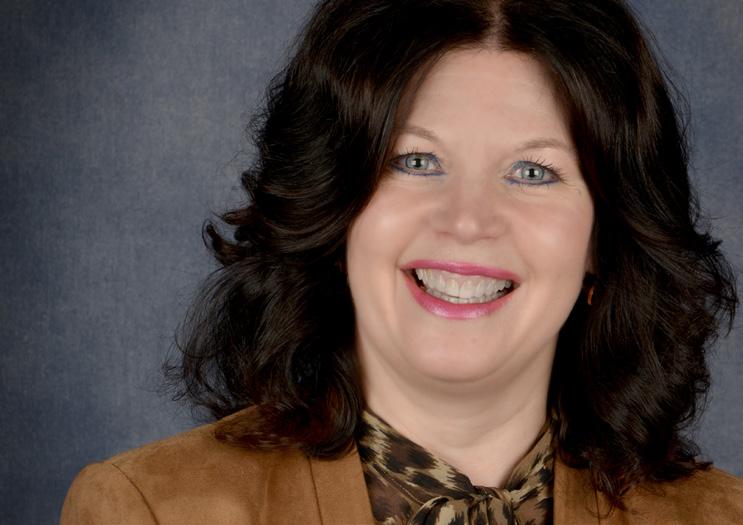
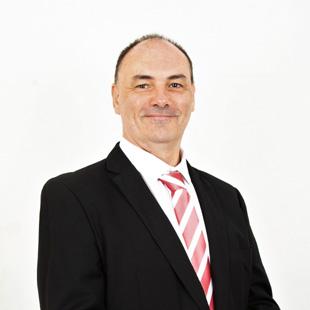
MENTOR’S MANTRA

EQUIPPING WORK-READY STUDENTS FOR TODAY’S DIGITALLY LED 21ST CENTURY
Professor Ian Findlay, President & Vice-Chancellor, University of Puthisastra, Cambodia
38
7 Higher Education Digest March 2024
HELPING BUSINESSES DEVELOP & INTEGRATE LONG-TERM SUSTAINABILITY GOALS
Ben Kellard MSc, CIPD, Director of Business Strategy, Cambridge Institute for Sustainability Leadership (CISL)


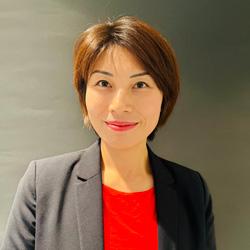

NAVIGATING THE UK INTERNATIONAL HIGHER EDUCATION LANDSCAPE
Dr Cheryl Yu, Director of International at the Jimmy Choo Academy
INDUSTRY PERSPECTIVE

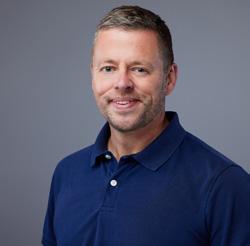
RETHINKING EDUCATION: SHAPING GLOBAL CITIZENS IN THE DIGITAL AGE
Blessing Adogame, Community Development Manager at Rewriting the Code, UK
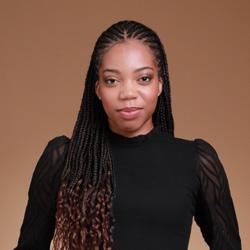

WHAT DO HIGHER EDUCATION OFFICIALS NEED TO KNOW ABOUT THE NEW DIGITAL SAT?
Brian Stewart, President, BWS Education Consulting, Inc.
8 Higher Education Digest March 2024
FOCUS
54 48 62 58 LEADER IN




THOMAS FUNKE
CO-FOUNDER AND CO-CEO, TOMORROW UNIVERSITY OF APPLIED SCIENCES
NAVIGATING THE FUTURE WITH 21ST-CENTURY SKILLS AND EDUCATIONAL INNOVATION
Thomas Funke is a stalwart in the realms of education and entrepreneurship, and the CoFounder and Co-CEO of Tomorrow University of Applied Sciences. With an illustrious career spanning over 15 years in the education sector, Funke has passionately championed the intersection of education and entrepreneurship.
As a lecturer specializing in entrepreneurship and innovation at both Goethe University Frankfurt and the WU Executive Academy of the Vienna University of Economics and Business, Funke brings a wealth of academic insight to his roles. In 2016, he took his commitment a step further by founding TechQuartier, a vibrant ecosystem in Frankfurt encompassing a startup hub, coworking space, and community haven. Since its inception, Funke has played a pivotal role in guiding nascent startups on their journey to success.
Beyond academia and startup mentorship, Funke extends his influence to the digital realm as part of the advisory board for Eintracht Frankfurt soccer club and iamstudent.eu. His academic journey includes the completion of a Ph.D. in Entrepreneurship from the Vienna University of Economics and Business, following the study of International Business.
In an engaging conversation with Higher Education Digest, Thomas Funke delves into the significance of 21st-century skills, the cultivation of sustainability-related competencies, and the essential skills for individuals navigating the complexities of the digital age. Join us as we explore insightful excerpts from this enlightening dialogue.
Higher Education COVER STORY
How would you define the term “21st-century skills” in the context of education? Why do you believe these skills are crucial in today’s rapidly changing world?
21st-century skills are essential in the context of education, tailored for a rapidly evolving world marked by swift changes, emerging business models, and advancing technologies. These skills aim to equip individuals to navigate and
thrive in dynamic environments. Our research project focused on meta-competencies and 21stcentury skills, resulting in a model designed to empower learners not only to comprehend and analyze critically but also to proactively drive change. Our framework comprises four levels with a total of 100 competencies integrated into all our curricula. These competencies include critical thinking, technological literacy, self-empowerment, sustainability thinking,

12 Higher Education Digest March 2024
Sustainability encompasses ethical decision-making for the greater good, considering the community’s welfare alongside personal benefits

entrepreneurial spirit, and emotional and social intelligence, collectively fostering the capability to act, develop, design new business models, products, and lead change.
In your opinion, how does fostering sustainability-related skills contribute to the overall development of an individual?
Fostering sustainability-related skills significantly contributes to an individual’s overall development. Our competency in sustainable thinking involves understanding complex systems rather than just linear cause-and-effect relationships. In a world of interconnectedness, individuals must navigate and act within these systems. Sustainability encompasses ethical decisionmaking for the greater good, considering the community’s welfare alongside personal benefits. It goes beyond mere innovation for profit, emphasizing value delivery to society while ensuring no harm to the planet. The impact on individual development varies depending on the specific aspect of sustainability considered.
13 Higher Education Digest March 2024
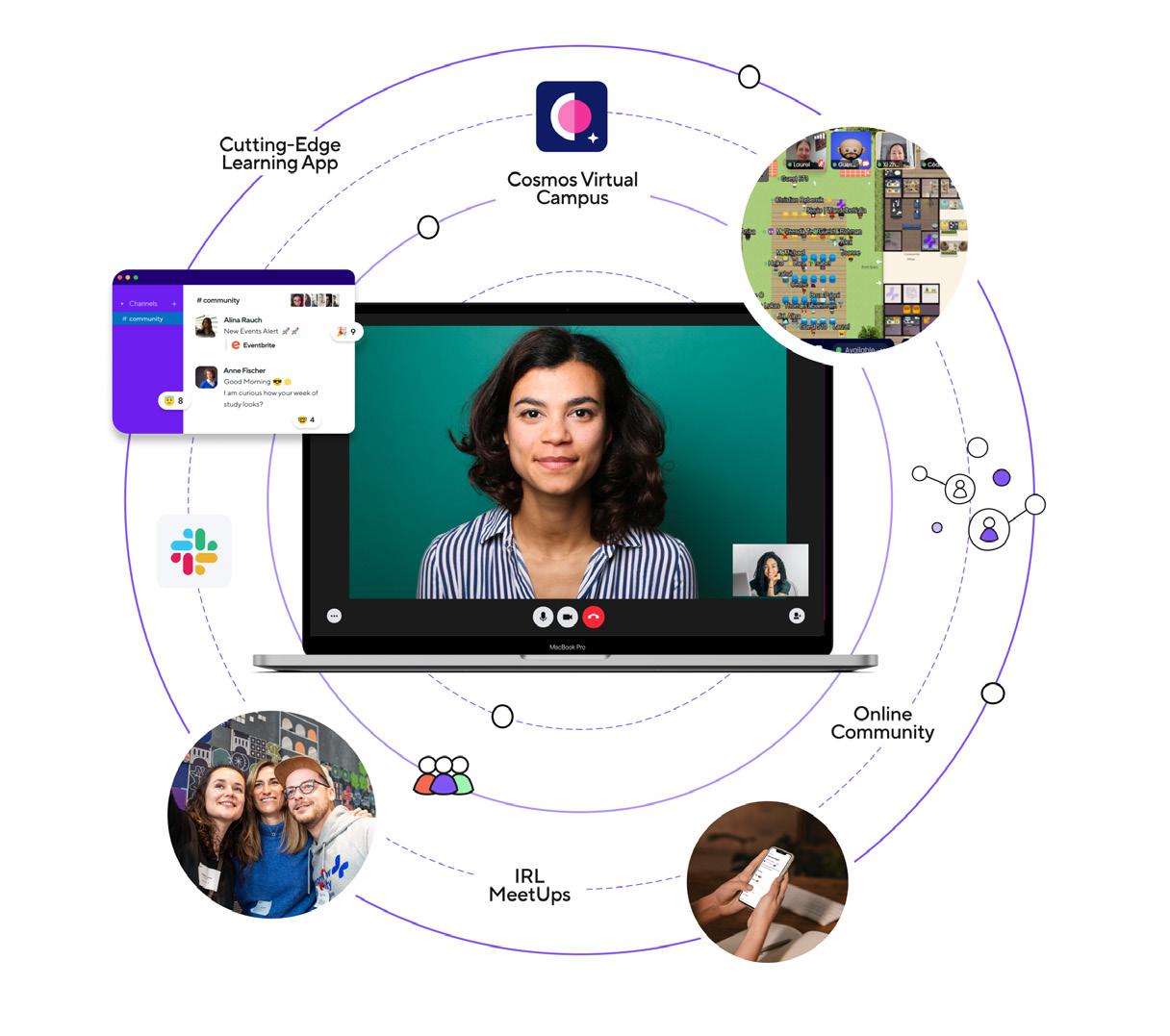
From an educational standpoint, what role can institutions play in instilling a sense of environmental responsibility in learners?
From an educational standpoint, institutions play a crucial role in cultivating environmental responsibility in learners. Focusing on the
environmental dimension of sustainability, institutions can heighten awareness of the human impact on the environment, both negative and positive. Knowledge and understanding empower individuals to make informed judgments and navigate complex situations. Our approach involves imparting a comprehensive
14 Higher Education Digest March 2024
understanding of the various dimensions of value and innovation. We emphasize that true innovations contribute to society while remaining environmentally friendly, avoiding harm to the planet. Our educational efforts extend to encouraging learners to act responsibly, considering not only short-term but also long-term implications. Education institutions bear a significant responsibility to foster both literate and responsible individuals capable of proactive action.
How does cultivating entrepreneurial skills enhance a person’s adaptability and problem-solving abilities?
Cultivating entrepreneurial skills significantly enhances adaptability and problem-solving abilities. These skills involve ideation, effectuation, and leveraging available resources to maximize outcomes. Entrepreneurial thinking encourages viewing problems as opportunities, emphasizing divergent thinking to generate multiple solutions rather than converging on a single answer. This mindset aligns with the principles outlined by Clayton Christensen,
emphasizing adaptability and resilience. In a rapidly evolving world, the ability to adapt to change and thrive in a dynamic environment becomes crucial. Entrepreneurial skills are inherently linked to problem-solving, reinforcing their role in fostering adaptability in individuals.
As technology continues to evolve, what skills do you think are indispensable for individuals to navigate and thrive in this digital age?
In the evolving landscape of technology, individuals must possess indispensable skills to navigate and thrive in the digital age. Crucially, being technologically literate involves understanding and effectively using new technologies. This literacy extends beyond the ability to code or delve deeply into tech development, which may be a specialized skill. Instead, it emphasizes the capacity to grasp new technological developments and discern their application fields. While some individuals may specialize in coding and machine building, the broader populace should focus on the practical
Entrepreneurial thinking encourages viewing problems as opportunities, emphasizing divergent thinking to generate multiple solutions rather than converging on a single answer
15 Higher Education Digest March 2024
Educational institutions can effectively integrate technology into their curriculum by emphasizing hands-on experience and practical application
and responsible use of technology. Mastery in using digital technologies becomes equally important as it enables individuals to comprehend the effects and impacts, such as those associated with artificial intelligence, without the necessity for everyone to be proficient in coding.
How can educational institutions effectively integrate technology into their curriculum to prepare students for the demands of the modern workforce?
Educational institutions can effectively integrate technology into their curriculum by emphasizing hands-on experience and practical application. This involves actively working with modern technologies through challenges and analyses. For instance, in courses like “Technology Revolutions,” students can assess new technologies for their potential and future applications. This approach directly embeds technology into the curriculum, allowing students to understand concepts, learn to code, and apply their knowledge to real-world challenges. By incorporating technology into various tasks and challenges, students not only become familiar with its use but also gain valuable insights into how it can enhance problem-solving and mission development. The key is to blend theoretical understanding with practical application, ensuring students are well-prepared for the demands of the modern workforce.
Do you see value in interdisciplinary learning as a means to develop a holistic set of skills? Why or why not?
Certainly, I strongly believe in the value of interdisciplinary learning as a means to develop a holistic set of skills. Our learning model is intentionally interdisciplinary, fostering collaboration among diverse disciplines. In our Bachelor’s program, for
16 Higher Education Digest March 2024
instance, we bring together coders, business professionals, marketers, entrepreneurs, strategy experts, and product designers during the calibration and second phases. This approach allows individuals with different skill sets to learn from one another.
Interdisciplinary learning extends beyond the subjects chosen and includes diverse backgrounds and perspectives. I find that diversity, not just in academic disciplines but also in cultural backgrounds, is equally crucial. The exchange of ideas and learning from different cultures contributes to breaking down perceived borders, promoting a more inclusive
and globally aware perspective. Therefore, I see interdisciplinary learning as a pathway to holistic skill development, with an added emphasis on the importance of diversity in the learning process.
What challenges do you foresee in implementing a curriculum that focuses on these 21st-century skills?
The primary challenge lies in ensuring that accrediting bodies and regulators can adapt to the rapid changes, particularly in emerging technologies like artificial intelligence (AI). The recent advancements in AI have
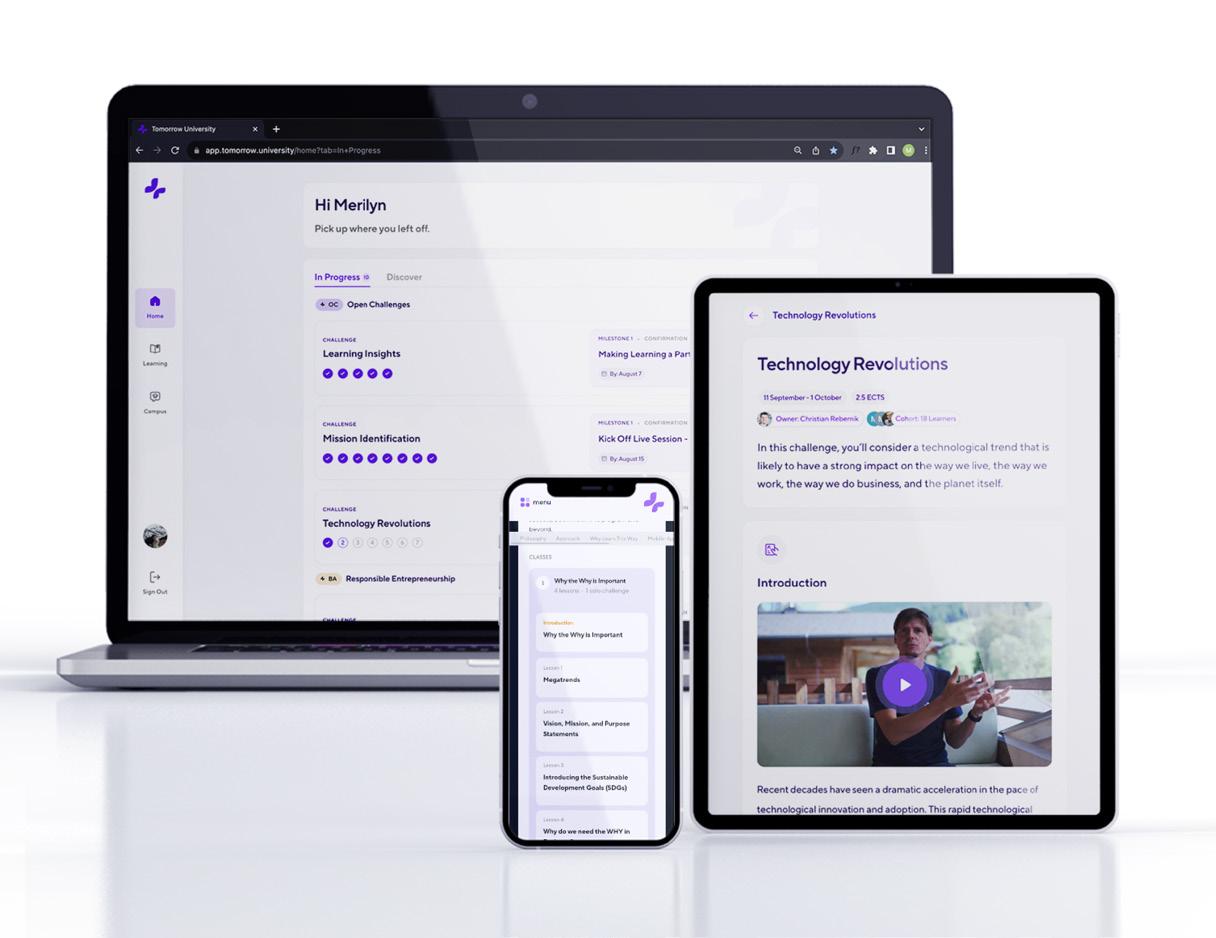
17 Higher Education Digest March 2024

implications for knowledge testing methods, prompting questions on how universities can effectively integrate such technology into their curriculum. This involves utilizing AI tools, such as chatbots and tutors, to provide feedback on knowledge. The challenge extends to universities keeping pace with these changes while also urging regulators to update regulations that may not align with the demands of the 21st century. Striking a balance between staying current and adhering to existing regulations poses a significant challenge for educational institutions.
Are there innovative solutions or approaches you’ve come across that address these challenges effectively?
Effectively multiple, one of them being us.
So I think we’re trying to use technology not just to embed it into the curriculum, but at the same time, also for our learning model. I’ve seen many other universities or educational institutions use modern technology also for educational purposes.
So as I said, chatbots Tech, A I to enhance the learning experience. but then some globally great schools and universities focus on the most modern technologie and also on interdisciplinary learning. Yes. So I see a lot of different solutions there.
How can individuals with a strong foundation in sustainability, entrepreneurship, and technology positively impact their communities?
For us individuals possessing a strong foundation in combination of these three
18 Higher Education Digest March 2024
pillars in sustainability, entrepreneurship, and technology can profoundly impact their communities through a holistic approach:
Deep Understanding of Sustainability: These individuals comprehend sustainability at its core, going beyond traditional roles such as CSR managers. Their understanding extends to practical applications and problem-solving within the sustainability domain.
Entrepreneurial Action and ProblemSolving: The fusion of sustainability and entrepreneurship involves more than report writing or carbon footprint measurement. It emphasizes taking entrepreneurial action to address challenges and solve problems. This proactive approach ensures a direct and tangible impact on the community.
Utilizing Technology for Positive Change:
Individuals with this skill set recognize technology as a powerful tool for positive change. They leverage their technological knowledge to implement solutions that contribute to a better world. This includes creating and utilizing circular business models that align with sustainable practices.
Systematic Combination of Pillars:
Rather than treating sustainability, entrepreneurship, and technology as separate pillars, these individuals adopt a systematic approach. They integrate these disciplines to form a comprehensive framework for creating positive change. This approach ensures a more synergistic and effective impact on their communities.
In essence, individuals with a strong foundation in sustainability, entrepreneurship,
Striking a balance between staying current and adhering to existing regulations poses a significant challenge for educational institutions
19 Higher Education Digest March 2024
and technology possess the capacity not only to understand these concepts but also to act proactively, solve problems, and leverage technology for meaningful and positive change in their communities.
From a broader perspective, what societal changes can we expect with a workforce equipped with these skills?
From a broader perspective, a workforce equipped with these skills is anticipated to catalyze transformative societal changes. The focus on climate action is expected to drive the development of innovative technologies, aligning with the comprehensive framework of the Sustainable Development Goals (SDGs). Learners, armed with these skills,
are likely to actively engage in solutions that span all 17 SDGs, demonstrating a collective commitment to global sustainability.
Moreover, there is a distinct emphasis on fostering diversity, equity, and inclusion within the workforce. Learners are not merely advocates but active participants in reshaping organizations into more responsible entities. This commitment extends beyond individual initiatives, reflecting a broader societal shift toward building inclusive and equitable workplaces.
In essence, the anticipated impact of a skilled workforce transcends individual endeavors, showcasing a diverse community that actively addresses a wide array of societal challenges. The multifaceted approach includes climate action, technological innovation, and a commitment to

20 Higher Education Digest March 2024
Rather than being solely content repositories, universities are expected to play a more dynamic role
diversity, equity, and inclusion, contributing to a more sustainable, equitable, and inclusive society.
What trends do you anticipate in the evolution of education to further enhance these critical skills?
Individualized Education: A significant trend involves moving away from off-the-shelf curricula to embrace individualized education. Tailoring curricula based on a student’s unique competencies and interests is becoming a predominant practice. This shift acknowledges that each learner possesses distinct strengths and weaknesses, aligning with their specific competencies and passions.
Competency-Based Learning: The adoption of competency-based learning is another notable trend. This approach goes beyond traditional learning outcomes, emphasizing the measurement and display of concrete competency growth. It prioritizes the understanding and demonstration of acquired skills rather than assigning grades or marks, providing a more nuanced view of a student’s progress.
Redefining the University’s Role in Society: A broader trend involves universities rethinking their role in society. Rather than being solely content repositories, universities are expected to play a more dynamic role. This entails not only developing new theories and technologies but also ensuring that knowledge is easily accessible to the public when applied. This shift reflects an evolving position for universities in society.
These trends signify a transformative phase in education, focusing on personalized learning experiences, measurable competency growth, and a redefined societal role for educational institutions.
21 Higher Education Digest March 2024
The distinction between knowledge workers and bluecollar workers is becoming less relevant, especially with the advent of AI, which now rivals human cognition
Individualized education: I think that is a huge trend currently. Instead of curriculum off the shelf, a specific person gets a different curriculum because they have a different set of competencies, and a different set of interests. For an example: I’m passionate about different things, but I’m not as good at coding Christian, my co-founder Christian, is. So in an ideal world, since I am at a different competency level, I would get a different challenge based on my actual interest and skill level. So it’s a trend with huge potential! Moving towards individualized education is should really be the goal of any educational institute.
Competency based: The second thing that I do see is competency-based learning. So not only focusing on writing down one’s learning outcomes, but then actually measuring for concrete competency growth and also seeing your competency development over time. So not just getting marks or grades but actually seeing how you further your competencies.
University positions in society: Those are the two main trends that I see apart from many others. But then also that universities rethink their role, and that they actually become
a content repository with great new theories or technologies being developed. And that this knowledge is also easily and publicly accessible when needed. So that’s a broader trend that I do see universities will definitely shift towards and change in their position in society.
Are there emerging fields or industries that you believe will require a specific emphasis on these 21st-century skills? Every industry is currently impacted, requiring a workforce equipped with 21st-century skills. The distinction between knowledge workers and blue-collar workers is becoming less relevant, especially with the advent of AI, which now rivals human cognition. Industries heavily dependent on human dimensions such as emotions may experience a slower disruption. However, the transformation is not confined to physical labor but extends to the cognitive aspects, affecting knowledge worker industries like consulting, law, and banking. Profound changes are expected across various sectors, necessitating individuals with adaptability and 21st-century skills. Additionally, industries where emotions play a vital role, such as psychology or coaching, will also demand individuals capable of adapting to emerging roles.
22 Higher Education Digest March 2024

EDUCATION LEADER 2024
Patti France
President, St. Clair College
Navigating the Crossroads of Innovation, Resilience and Community Impact
Patti France’s postsecondary education journey began at St. Clair College, where she started part-time working in the Registrar’s Office. Little did she know that this initial clerical role would set the stage for a career marked by innovation and a commitment to the everevolving landscape of education. “The Registrar’s Office, in a way, introduces you to almost all of the College’s various bureaucracies, everything from academic grading to information processing to student financial record-keeping,” shares Patti France.
France’s career ascent mirrored her exposure to the College’s various departments. She transitioned seamlessly from academic grading to information processing and student financial record-
24 Higher Education Digest March 2024
MOST VISIONARY
France’s professional journey at St. Clair College was marked by a unique combination of expertise in Information Technology and a steadfast commitment to being a “generalist.”
Patti France President, St. Clair College

St. Clair College, located in the heart of Windsor-Essex and Chatham-Kent, provides a diverse and welcoming environment for international students
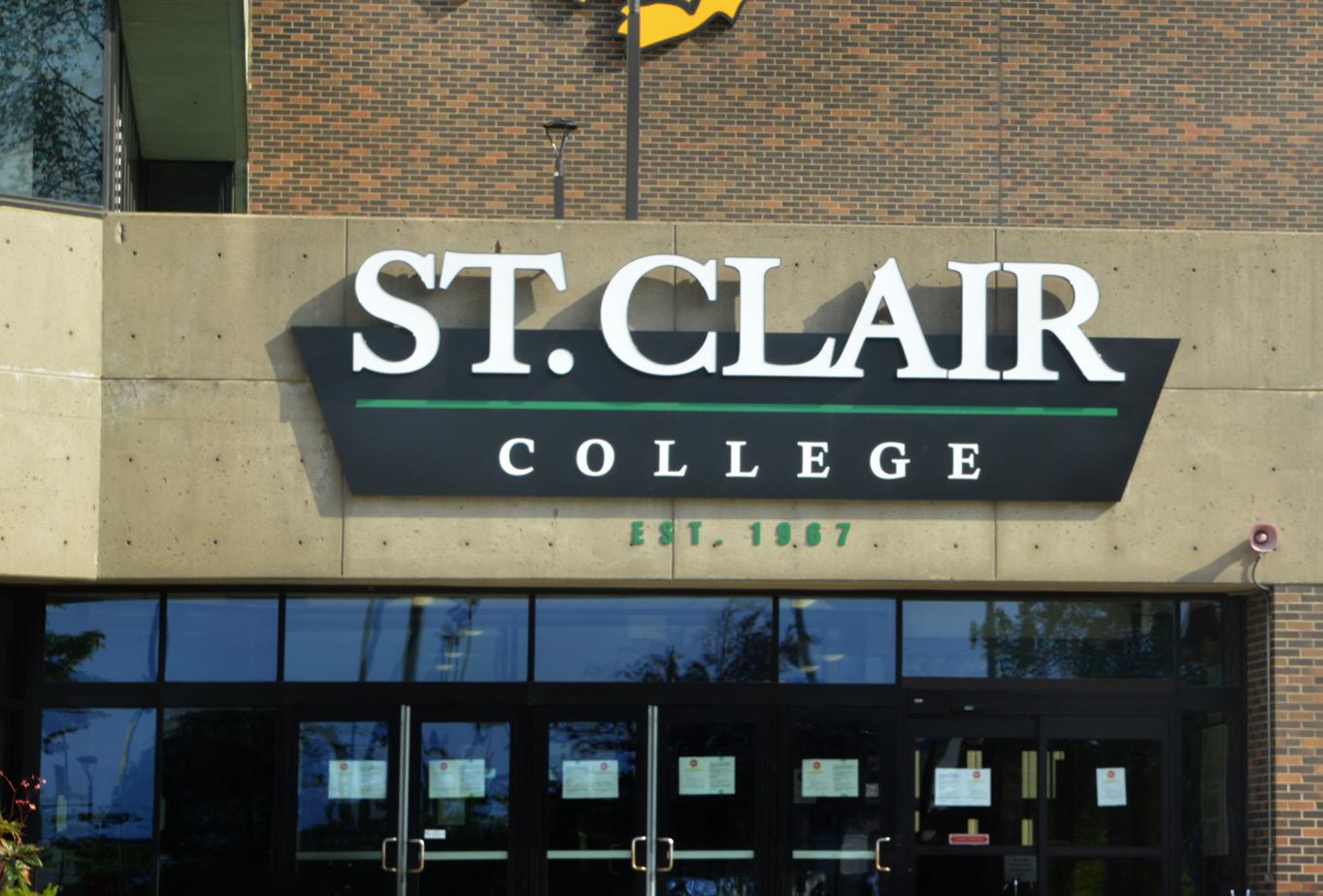
26 Higher Education Digest March 2024
keeping, wearing the hats of both supervisor and trouble-shooter. Her gaze spanned every sector of the institution – registration, information technology, academics, human resources, facilities management and finance. France says, “My inspiration has always been that I’ve been fascinated by all of it, by its interconnections, and how it all exists – and how it all must function ideally – in order to serve our students properly.”
Then, why the interest in the postsecondary level of education? France, with a smile that echoes years of diverse experiences, points

out, “My own multi-faceted career path of constantly having to learn and master new departmental methods and systems meant that I rapidly came to appreciate the concept of lifelong learning. That led, naturally, to the pursuit of my university degree in Adult Education.”
France’s impactful career lies in modernization. From her early days as a full-timer, she spearheaded the conversion of the College’s systems from on-paper to computerized formats. “As anyone who went through the “computer revolution” would tell you, that was an exciting era when you had to both develop new systems and then teach – convince – veteran employees to use them,” recounts France. Yet, this experience became the impetus for France’s enduring commitment to fostering modernization in various realms.
“Educational institutions must keep pace, even strive to be ahead of progress in the world,” France asserts passionately. For France, this means not just keeping up but pioneering milestones: new buildings, state-of-the-art labs and clinics and innovative programs. These, she believes, are not just exciting developments; they are essential for preparing graduates for the opportunities that await them in the dynamic world beyond academia.
Nurturing Excellence Through Generalist Leadership
France’s professional journey at St. Clair College was marked by a unique combination of expertise in Information Technology and a steadfast commitment to being a “generalist.” From registration to human resources and finance to academics, she managed and significantly contributed to each facet of the
27 Higher Education Digest March 2024

institution as a member of faculty, support staff and administration. “In fact, I’m one of the few people at the College to have been, at one time or another, a member of all three of our employment sectors: faculty, support staff and administration,” recounts France.
From registration to information technology, academics to human resources, facilities management to finance, France embraced the role of a generalist. In her eyes, being a generalist was not just a professional trait; it was a valuable asset. In a world increasingly defined by specialization, she saw the worth in having someone who could swiftly comprehend and elucidate the wide-ranging ramifications of a policy initiative or a project proposal.
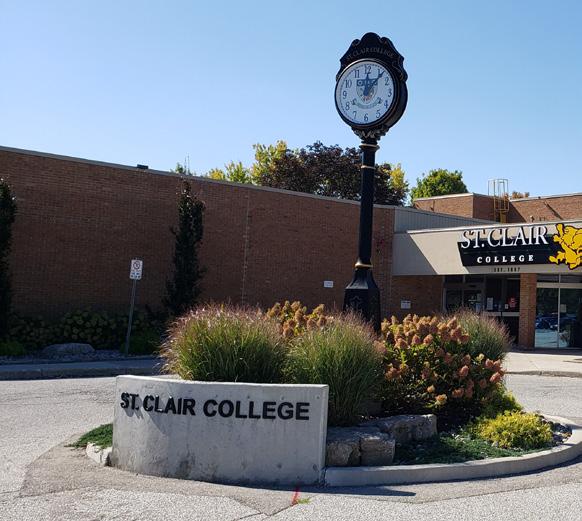
28 Higher Education Digest March 2024
As the President of St. Clair College, France has also left an indelible mark on the Canadian college system, steering it towards a unique blend of hands-on, job-ready practicality in its curriculum

Upon assuming the presidency, France embarked on a mission to ensure quality across all facets of the institution, be it bureaucratic or academic, in a quantifiable and demonstrable manner. This commitment manifested in the steady improvements in graduate employment and student satisfaction rates, evident in the now discontinued Key Performance Indicator surveying by provincial governments. St. Clair College, under her leadership, consistently found itself among the “top five” in various quality categories.
However, France sought not just recognition but a more scientific validation of St. Clair’s commitment to excellence. Several years of collective effort across all departments culminated in the development and implementation of policies and best practices. In 2021, the institution received an unblemished, comprehensive Quality Audit from the Ontario College Quality Assurance Service. “The day that glowing report came across my desk was, in a way, my proudest day as a St. Clair employee because it proved what I’d always known: that we were an exceptional institution delivering an unparalleled quality of education,” proudly shares France.
Creating a Global Hub of Education and Innovation
St. Clair College, located in the heart of WindsorEssex and Chatham-Kent, provides a diverse and welcoming environment for international students. “We are well equipped to welcome international students from almost every corner of the globe, where they can find a connection to their homeland,” says France. In fact, the strength embedded in the cultural mosaic of Southwestern Ontario makes it an ideal home for international scholars seeking a connection to their roots.
29 Higher Education Digest March 2024
The College has eight academic schools (Information Technology, Business, Health Sciences, Nursing, Community Studies, Skilled Trades and Apprenticeships, Engineering Technologies, and Media, Art and Design) that offer over 100 programs. It is committed to providing practical, in-demand employment skills through work-integrated learning components. France states, “Like all Canadian postsecondary schools, we’ve been thrilled to welcome international students to our classrooms during the past halfdozen years when our enrolment of global scholars has climbed tenfold from the mid-hundreds to the mid-thousands.”
Among the cutting-edge offerings, the College takes pride in its focus on the manufacturing and maintenance of electric vehicles – a program poised to resonate with aspiring engineers worldwide. The anticipation is high as St. Clair expects an increasing influx of international students with an engineering mindset to explore this groundbreaking program in the coming years. St. Clair College has also established a presence at three campuses in Toronto, further expanding its influence across Ontario.
Apart from academics, St. Clair empowers students through its Peer Tutors program. France explains, “High-performing students in each program are hired by our Student Services to act as either

30 Higher Education Digest March 2024
one-on-one tutors and/or to hold regular supplemental workshops for groups of students who might be having difficulty with a particular concept or course.” This approach recognizes the effectiveness of students tutoring their peers and goes beyond traditional teaching methods. “Our professors, in class, certainly offer frequent reviews and remedial assistance, but there is something extremely and uniquely effective about students tutoring their fellow students,” assures France.
As the President of St. Clair College, France has also left an indelible mark on the Canadian college system, steering it towards a unique blend of hands-on, jobready practicality in its curriculum. Unlike traditional academic institutions, the focus here is on “real world” skills, making it a standout choice for students seeking tangible career preparation.
One distinctive aspect of the Canadian college system is the majority of faculty members are chosen not just for their academic credentials but primarily for their professional expertise and experience. “We have a “train the teacher” program to give new employees all of the skills and mentorship that they need to function in the classroom so that they can translate all of that personal experience into the curriculum,” France.
St. Clair College’s professors, with backgrounds deeply rooted in the industries they serve, constantly engage with businesses and services related to their programs. This continuous interaction ensures that St. Clair College and its graduates remain in sync with the evolving needs of prospective employers, creating a dynamic synergy between education and industry.
Beyond the corridors of St. Clair College, France’s influence extends into the heart of Windsor-Essex, a testament to her commitment to community wellbeing and her belief that education should be a force for positive change
31 Higher Education Digest March 2024
A Catalyst for Community Engagement
Beyond the corridors of St. Clair College, France’s influence extends into the heart of Windsor-Essex, a testament to her commitment to community well-being and her belief that education should be a force for positive change. “My long-standing involvement with Connecting Windsor-Essex arose due to my background in I.T., including my times as the College’s Chief Information Officer,” says France. It showcases her dedication to ensuring efficient internet and communication services for all citizens, with a special emphasis on the needs of students. This commitment became especially crucial during the pandemic when the College had to swiftly transition its curriculum to online delivery.
France’s role on the hospital’s board mirrors her passion for healthcare education. With a significant number of Nursing and Health Sciences students destined for roles in the local medical system, including the hospital, France’s engagement takes on a personal and professional dimension. The ongoing development of a new hospital in the

With a significant number of Nursing and Health Sciences students destined for roles in the local medical system, including the hospital, France’s engagement takes on a personal and professional dimension
32 Higher Education Digest March 2024
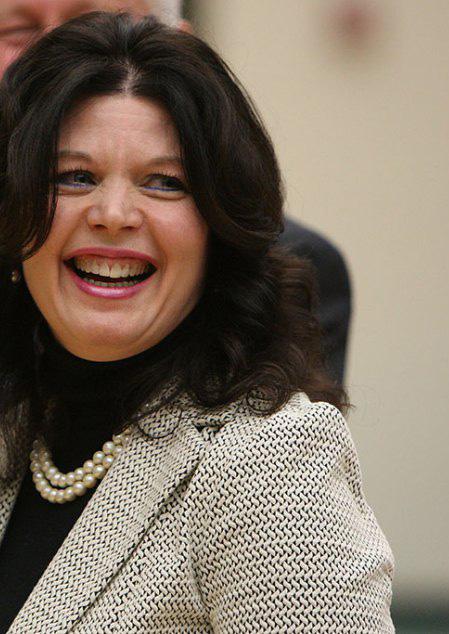
area adds an extra layer of excitement to her involvement.
Notably, St. Clair College, under France’s leadership, has become a beacon for partnership opportunities. “If a local charity or agency, or a fellow educational institution, comes to us with an idea for a project or program that we can assist with, we’ll jump at it,” says France. What sets these partnerships apart is the decentralized nature of connections, often initiated by student councils or alumni associations. These groups, driven by a philosophy of community outreach, contribute not just financially but also with valuable man-hours to local organizations and charities.
France explains, “I often remark that “community college” may not actually be part of our official corporate name, but it certainly is part of our philosophy: we’re here to help the community in any way that

33 Higher Education Digest March 2024
Among France’s notable endeavors has been the ongoing construction of a Welcome Centre at the main campus. This project, a culmination of her presidency wish list, seeks to streamline and centralize essential student services that were previously scattered across the campus

34 Higher Education Digest March 2024

we can.” As France often notes, the community can expect assistance from St. Clair College “because that’s what Saints do” — a testament to the institution’s commitment to being not just an educational hub but a catalyst for positive change in the community.
Architect of Change
Among France’s notable endeavors has been the ongoing construction of a Welcome Centre at the main campus. This project, a culmination of her presidency wish list, seeks to streamline and centralize essential student services that were previously scattered across the campus. This Welcome Centre, scheduled to open shortly before her retirement in mid-2024, reflects her commitment to enhancing the student experience. “I’m hoping that, shortly before my retirement takes effect, we’ll be cutting the ribbon to open that much needed and long overdue Welcome Centre,” shares France.
Yet, amidst her accomplishments, one of the most challenging tests of leadership came during the COVID-19 pandemic. In a remarkable seven days, St. Clair College pivoted swiftly, transitioning all lessons to an online format and implementing remote connectivity for teachers and students. This ensured that classes resumed seamlessly without missing a beat. France claims, “We were one of the first – and only – Ontario postsecondary institutions to resume in-person instruction with the pandemic still taking place, using rigid testing and social-distancing procedures approved by both the provincial government and the local public health unit.”
Navigating the Storm
In the annals of education, the COVID-19 pandemic emerged as an unprecedented crisis, challenging institutions in ways unimaginable for several decades. For Patti France and St.
35 Higher Education Digest March 2024

Clair College, the past years were a testament to resilience, adaptability and an unwavering commitment to education in the face of uncertainty. “We were constantly pivoting for at least a year, trying to deliver curriculum in a new, novel and untested way, having no idea of whether students would even continue to pursue their educations or just go into hibernation, and then, when we re-opened when the pandemic was still occurring, having to physically redesign almost all of our buildings to ensure social distancing,” recounts France. Yet, St. Clair College, driven by the conscientiousness of its staff and the enthusiasm of its students, defied the odds.
Enrollment, even in the realm of remotelearning international programs, remained stable throughout the pandemic. The College not only survived but thrived, emerging from the crisis stronger and more resilient than ever. The tale of St. Clair College during the pandemic is not just one of survival; it’s a
narrative of thriving and evolving in the face of adversity.
As France reflects on the transformative period, she envisions an even deeper connection between institutes of higher learning and their communities. “The “ivory tower” image of a college is a thing of the past if it ever was true,” states France. The evolving relationship is evident in the institution’s direct connection with outside stakeholders, emphasizing experiential learning and increased involvement in formal research and development projects.
St. Clair College’s foray into cooperative Research and Development is a clear indication that the institution’s expertise and energy are valuable community assets readily available for collaborative endeavors. As the educational landscape continues to transform, the College stands not just as a beacon of academic excellence but as a dynamic force, actively contributing to the economic, social and health-related well-being of its community.
36 Higher Education Digest March 2024







MENTOR’S MANTRA
Equipping WorkReady Students for Today’s Digitally Led 21st Century
ProfessorIanFindlay, President & Vice-Chancellor, University of Puthisastra, Cambodia
Professor Ian Findlay was appointed President and Vice-Chancellor of the University of Puthisastra (UP), Cambodia in August 2018. Ian has had a very successful career in health education, research, learning and teaching and maximizing opportunities in business, research, vocational education and higher education. In health education, he has been Executive Dean, Health for a number of major education providers. In research, he has obtained prestigious ARC, NHMRC and MRC grants, and has more than 50 publications in prestigious journals such as Nature, MJA, BMJ, Clinical Genetics etc.
In addition, Ian is a principal inventor on 11 patents primarily in the fields of forensics, molecular diagnostics and RFID. In learning and teaching, previously he was Pro-Vice Chancellor, Learning and Teaching leading L&T across 24 campuses and 40,000 students. He successfully introducedmanykeyinnovations,includingflippedlearning, to maximise learning and student employment outcomes.
Recently, in an exclusive interview with Higher Education Digest, Professor Findlay shared his insights on the changes that have taken place in the higher education sector & Cambodian education system over the years, the major strengths of University of Puthisastra, Cambodia, key suggestions on how to integrate quality and excellence at all levels of education, and much more. The following excerpts are taken from the interview.
Higher Education
Across the world higher education has generally not kept pace with the very rapid changes in technology, Digital 4.0, the rapidly changing employment landscape and student expectations, career requirements
You have so many years of experience in the field of education and academics. How do you see the changes which have taken place in the higher education sector & Cambodian education system over the years?
Unfortunately, across the world higher education has generally not kept pace with the very rapid changes in technology, Digital 4.0, the rapidly changing employment landscape and student expectations, career requirements. Fortunately, the covid pandemic has rapidly accelerated change and many universities are now facing rapid reevaluation of their very purpose, relevance and future. Those universities that do not evolve will no longer be relevant and die.
Cambodia is no different – many lecturers do not even have the basics of technology. Cambodia also has a mix of public and private universities producing generally cheap but poor-quality degree programs, with 8090% students studying social sciences such as business, marketing etc with only 5-10%
STEM. This results in a substantial shortage of STEM graduates despite 85% of high-demand jobs are in STEM, and a massive over-supply of business graduates.
Fortunately, Cambodia, and its enlightened Education Minister, Dr. HANG Chuon Naron are now addressing these problems by:
Introducing Quality Assurance via ACC (Accreditation Committee of Cambodia) requiring all HEI to have a minimum standard.
Introducing guidelines for academic teaching and promotions. Currently only 8% of university lecturers have a doctorate degree, have no or minimal research experience but are still referred as Professors.
Introducing small research grants to encourage academics to become research active.
Actively pursuing a STEM agenda, encouraging schools and school children to focus on STEM.
Actively pursuing the introduction of technology (Wi-Fi, internet) into schools, especially via NGS (New Generation Schools)
39 Higher Education Digest March 2024
Tell us about the University of Puthisastra. What are the major strengths of the University?
We have a number of key strengths:
The university of Puthisastra (UP) has over 203 MOUs with domestic and international organizations and universities. We actively promote international exchanges and aim for 100% of our students to have an international experience during their time at UP, we also strongly promote on-the-job education and training with almost all of our students’ doing internships in hospitals, industry etc. This helps to ensure that both their hard skills and soft skills are relevant to industry needs.
English. We recognize that English is the language of international success. UP is the only university to offer 4
years of intensive English tuition free of charge to students. English is so important because it is the international language of success in health, technology, business, finance, science, diplomacy in fact in so many fields. English is also the international language of the entire world – opening up so many international opportunities. Without good English students have a very limited career. So good English skills are a must. UP teaches 4 years of English to students - free of charge.
UP embeds 1. Research skills, 2. Critical thinking/soft skills, 3. IT skills and 4. English skills into 100% of its courses to ensure that UP graduates have the skills to be fully prepared to be the leaders of tomorrow.
We have health programs such as medicine, pharmacy, dentistry, nursing and
Without good English students have a very limited career. So good English skills are a must

40 Higher Education Digest March 2024
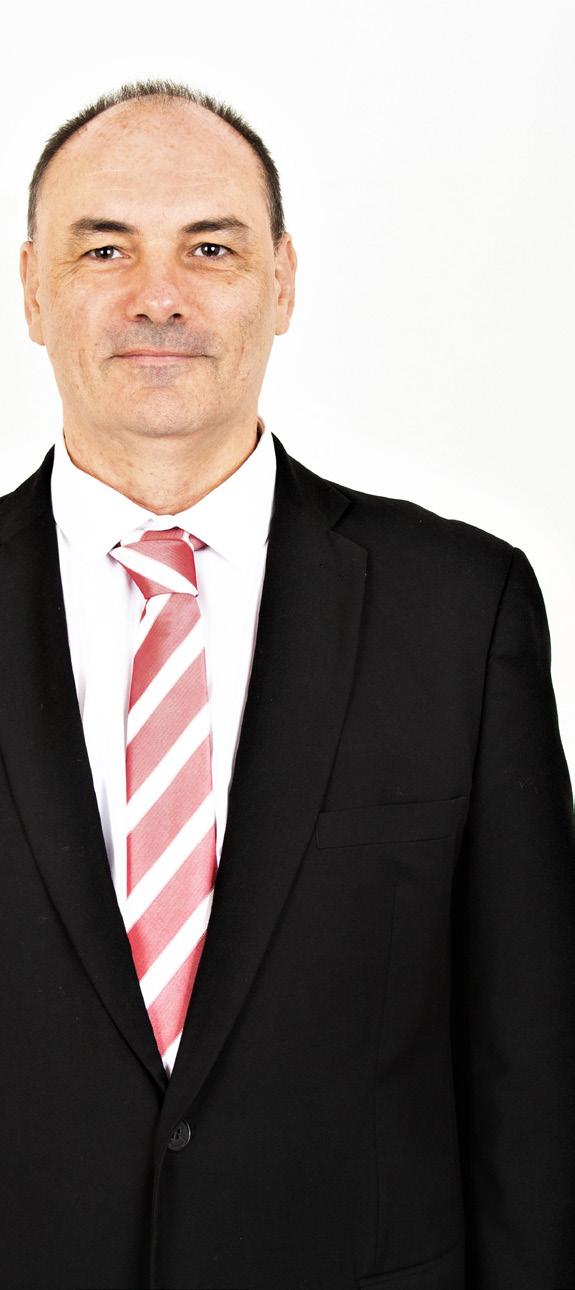
midwifery – creating young skilled professionals to be the health Leaders of tomorrow.
Science and research we have programs such as lab technology and Bachelor of Science research degree. These allow local Cambodian young people to learn the broad principles of research and equip them to be the science and technology leaders of tomorrow. UP is the only Cambodian university to have a research degree – guaranteeing good jobs in this exciting frontier.
We have technology programs (such as our bachelors and Masters of IT). Our IT programs focus on the big technology issues of today –data science, big data and cybersecurity.
UPOP - our custom-built leading learning and teaching systems – not just Zoom or Skype or Facebook – has been recognized as one of the very best on Cambodia.
our modern curricula based on international best practice, delivered by international experts. our leading research – with over 200 papers from UP in 2022 – the highest number of research papers in Cambodia. UP also has 6 or the top 20 researchers in Cambodia - more than all the other universities put together.
By delivering more than 75,000 hours of quality online teaching – using technology to make sure UP students and graduates continue to succeed no matter where they are
We also have our very own UP Health centre. The largest pharmacy in Cambodia, the largest teaching dental hospital in Cambodia and a wide-ranging medical centre for our students to see and experience real-life patients with real life problems.
Additionally, UP became the first and only Cambodian university ranked in over 1400 of the World’s Top Universities in very
41 Higher Education Digest March 2024
DEI is not a major issue; some would argue that this is a luxury when many Cambodians are struggling to survive
prestigious Times Higher Education Rankings; and we celebrate this here today. UP also became a Top 500 university for the Sustainable Development Goals of the United Nations.
UP is also the only university which has a dedicated research degree; our Bachelor of Science (Research) to strengthen Cambodia’s increasingly important research and economic future as repeatedly outlined by the Cambodian Government. Its not a coincidence that the strongest nations have the highest investment in education, health and innovation. And that’s what UP does.
UP has also recently been recognized at the top 28th private university in ASEAN by AlliedHE.
Our students are already seeing the success of the UP approach. In 2022 UP students achieved 100% success in the national Exit exams. 100% pass in Medicine, 100% pass in Dentistry, 100% pass in Pharmacy, 100% pass in Nursing, 100% pass in Midwifery. These are the very best results in Cambodia.
As the VC of University of Puthisastra, what are the challenges do you face and how do you overcome them?
Cambodia is still a developing country and faces several main challenges:
1. Skilled Human resources. The Khmer Rouge genocide just 40 years ago slaughtered ¼ of the population especially the educated. This has resulted in a huge shortage of educated/trained professionals aged >50 – traditionally those who would train, teach and mentor the younger generations.
2. Cambodian education is also poor. Resulting in poorly educated/skilled teachers providing low quality teaching to students – often rote learning.
3. Financial challenges – the average salary is ~$250 per month so education is not a high priority
42 Higher Education Digest March 2024
for parents who need their children to earn money rather than get an education.
4. Institutional inertia – culturally people are trained to comply and not rock the boat. Making the innovation required for success is difficult to progress.
Cambodia has other challenges.
Poor quality higher education -
Only 10% students go to higher ed (40% developed countries), only 1% into health. 8090% of students do Business/social science –often very cheap and poor quality.
Only 8% of university lecturers have doctorate degrees - >95% in developed countries. UP has 65% with doctorate and 91% with master’s or above.
Only 6.5% (9/138) Cambodian HEI have minimum standards (ACC) accredited by Cambodian Government
Inadequate skills in current work force. Both current skills and future skills. Almost non-existent professional development/ training. Cambodia has enormous Human Resource problem – very difficult to recruit skilled, trained staff.
Almost no development of soft skills/ critical thinking.
How does your university approach diversity, equity, and inclusion, both within the student body and among faculty and staff?
DEI is not a major issue; some would argue that this is a luxury when many Cambodians are struggling to survive. However UP has strong DEI policies, 51% of our students, 47% of our staff and 38% of our Leadership group are female.
Cambodia is a very tolerant and inclusive country and DEI is not a high priority.
What are your views on leadership? How should university vice-chancellors and administrators ensure that their faculty members and students transform into world-class leaders?
In my view university vice-chancellors have several key roles:
1. Provide inspirational and aspirational leadership by providing a strong vision for all staff to believe in. A family environment that encourages personal belonging and ownership which in turn promotes strong values and work ethic.
2. Allow a safe space for mistakes. Have a risk management, rather than risk averse, culture for mistakes. Without mistakes there is no progress. I’d rather people do 8 things well and make 2 mistakes than do nothing well.
3. Provide personal mentorship to junior leaders. To be a “father” figure to encourage them, allows them to grow and become the success they deserve, yet make sure that they remain aligned to the greater vision.
4. Provide broad direction but allow staff to do their jobs. They know their jobs better than the VC does.
5. Provide strong values including recognizing both good and bad performance – and addressing it.
6. Juggle the competing demands of a university seemingly effortlessly promoting confidence in ability, leadership and direction of the university. People want to belong to success.
43 Higher Education Digest March 2024

Ensure that all staff live and breathe these values – not just pay lip service – by demonstrating how these values can lead to success
44 Higher Education Digest March 2024
As a seasoned academician and administrator, what are your suggestions, to integrate quality and excellence at all levels of education?
1. Strongly promote these values throughout the organization
2. Ensure that all staff live and breathe these values – not just pay lip service – by demonstrating how these values can lead to success.
3. Staff training so that all staff not only know expectations but also know how to achieve these expectations. UP offers 74 training courses at all levels to reinforce values.
Mental health is a key concern for many students. What steps are you taking to support students’ mental health and well-being?
Cambodia has major mental health concerns including intergenerational trauma from genocide as well as the modern pressures that students face. UP has a comprehensive Student Welfare service with dedicated staff – probably the only university in Cambodia to do so. We provide a PASS (Peer Assisted Student Support) where senior students mentor & support junior students. We also have an active referral system referring at risk students to trained professionals/counsellors.
Where are you seeing students engaging the most and the least?
Cambodia is quite different to Western education. Students (and especially parents) are very focused on job outcomes, so students only do courses that have very clear, very defined careers rather than doing courses that just interest them. This means that students are
rather conservative and reluctant to try new courses or something new. However, with a young energetic population (65% of Cambodia are under 30) who demand more, the rapidly (37% per year) increasing middle class and Cambodia’s fastest growing economy in ASEAN there is growing understanding of the benefits and need for high quality education –especially international education. However, this is still tempered with substantial financial constraints.
Traditionally >90% students undertake business related courses at ~120 of the 138 Cambodian Higher Education institutions. These courses are usually cheap and low quality. Only 5% of graduates are STEM graduates despite 85% of the highest demand jobs being in STEM. Overproduction of business graduates and insufficient STEM creates a huge imbalance.
However, the Cambodian Govt has recognized this and is actively promoting STEM, higher quality education and higher quality standards which will all combine to force the poorer quality business providers out and rebalance graduate attributes to fit Cambodia’s needs.
Vocational Education/TVET training is almost non-existent in Cambodia.
With an ever-changing higher education landscape, what do Vice-Chancellors and their senior teams need to be mindful of in the coming year?
Covid has accelerated change and continues to be a powerful disrupter of the education system but is also a promoter of innovative teaching and learning processes. What brings chaos brings opportunity. In a very short period of time, covid has triggered a
45 Higher Education Digest March 2024
forced digital transformation of educational delivery. Only enlightened, visionary and successful leadership will be able to shepherd this revolutionary approach – challenged by decades of university complacency, inertia and procrastination. Universities with conservative figureheads and those driven by profit more than academic excellence will disappear. Only those that are student focussed and evolve quickly to the sweeping changes required of higher education will survive.
Although change has been obvious for decades, Covid has accelerated change in many areas:
1. Increased use of technology – hugely increased online learning which brings its own opportunities and challenges.
2. Increased expectations of students –education has become much more expensive so students are increasing demanding higher value for money, they will no longer tolerate 2nd rate lecturers, content, facilities and poorer student outcomes. Only the strongest, and/or most prestigious and/or most innovative universities will survive.
3. Rapid changes in international education. Foreign students are no longer queuing up for a Western degree and the often barely mentioned but inevitable carrot of PR. Compounding this decline have been shortterm actions such as Governments reducing visa availability, sending students home during covid, and greedy universities with very high international fees = $25-30k USD per year. all contributing to killing the golden goose. International education also faces challenges from the other direction - the rapid rise of
universities, particularly Asian, in university rankings such as THE and QS with the subsequent fall of Western universities – thus eroding a major selling point of TOS. Why should Chinese students spend $40-50k/yr (or $150k for 3 yr degree) to come to Australia where they have a local university with higher ranking on their doorstep? Additionally, some countries such as China, traditionally a very lucrative source of IE students, are actively encouraging students to stay at home. We must look to alternative models such as Enabler or Partnerships models if the richness of IE is to continue to prosper. We are just waking up to post-covid bounce, the inevitable rise of Asean universities in World rankings and the complacency of much of the Western sector will slowly reach tipping point then it will come tumbling down. I predict that in 10 years traditional onshore enrolments will decline by 70% - primarily affecting universities outside the global top 100. Huge implications for Australian (and other) universities that are overly dependent on IE and only just breaking even now with high levels of IE. What happens when the $37 Billion (Australia) and $43 Billion (UK) IE market dries up? Australia currently has ~170 HEI - many focused only on the IE market. I predict <100 will survive the next 10 years.
4. Value and relevance of higher education qualifications - many organizations no longer require degrees. High profile figures like Tesla’s CEO, Elon Musk, and Apple’s CEO, Tim Cook, have questioned the need for degrees, and In 2021 IBM announced it had removed bachelor’s degree requirements for more than half of its US openings. Google’s
46 Higher Education Digest March 2024
Covid has accelerated change and continues to be a powerful disrupter of the education system but is also a promoter of innovative teaching and learning processes
job postings requiring a bachelor’s degree fell from 93% to 77% between 2017-2021. More and more companies and young people are realizing degree requirements put them at a “competitive disadvantage”. Many companies (particularly in finance, business management, engineering, and health care occupations) have scrapped degree requirements altogether to widen their net and diversify their workforce. Young people are increasingly questioning
the need to get a >$100,000 education debt as well as foregoing 3-4 years of earning potential ($200-400k) – $500,000 behind in total just to get a degree that has limited value.
The challenges, including financial, are combining to substantially challenge the very being and purpose of many universities –which are further disadvantaged by their often complacent, risk averse workforce. Only those that evolve will survive.
47 Higher Education Digest March 2024
Rethinking Education: Shaping Global Citizens in the Digital Age
The current state of global education demands our attention, reflection, and most importantly, collective action. As someone born in Nigeria, raised in Germany, grew up in Scotland, established in United States, and currently studying in England, I embark on a journey into systems that claim to be the epitome of educational enlightenment but often fall short of equipping students with the practical skills needed to navigate the complexities of the modern world.
A System in Critique:
The educational system in Nigeria, much like in many other parts of the world, has been under intense scrutiny. A system criticised for its failure to adequately prepare students for the real-world challenges and opportunities that await them. The trifecta of inadequate funding, outdated curriculums, and staggeringly low literacy rates has created a breeding ground for a crisis – high unemployment rates among Nigerian graduates. Adding salt to the wound, prolonged strikes frequently
Technology’s role extends beyond individual growth, fostering global connectivity through social media and virtual events
48 Higher Education Digest March 2024
INDUSTRY PERSPECTIVE
BlessingAdogame, Community Development Manager at Rewriting the Code, UK
Blessing Adogame, a global citizen raised in Nigeria, Germany, Scotland,andtheUnitedStates,draws on her diverse upbringing to empower individuals worldwide. Her nomadic life instilled a profound appreciation for learning and adaptability. Each transition between countries became an opportunity for self-discovery, fostering resilience in the face of challenges. Her commitment to supporting student development and access to education became evident during her time at university. Blessing initiated a global campaign thatsuccessfullymobilisedover20,000students on LinkedIn, emphasising the importance of unlocking one’s full potential. Beyond the digital realm, Blessing shares her insights at the United Nations, schools globally, and STEM workshops supporting young black girls in the tech industry. Leveraging her diverse background, she actively unlocks doors for others and passionately advocates for the transformative power of education on a local and global scale. In her debut book, “BoundtoBeBoundless,”Blessingshares captivating anecdotes and reflections from her multicultural upbringing. The book serves as an inspirational guide, encouraging readers to embrace their unique paths, overcome adversity, and unlock their boundless potential. Through her compelling storytelling, Blessing imparts valuable lessons, making her narrative a source of inspiration for those navigating their journeys toward personal and professional growth.

Education
disrupt the learning process, leaving students stranded without access to classrooms and educational resources.
However, the challenges in Nigeria are not unique. The global education landscape is marred by various issues that hinder its ability to foster true intellectual growth and empowerment. Let’s take a glimpse into the struggles faced by two other nations - Germany and Scotland.
In Germany, a country lauded for its economic prowess and technological advancements, a crisis is unfolding. A severe shortage of qualified teachers has led to overcrowded classrooms and diminishing quality of education. The very
foundation of a student’s educational journey is compromised when the mentors guiding them lack the necessary qualifications and resources.
Meanwhile, in Scotland, the early stages of child development are neglected. The critical phase in a child’s life, where foundations for future learning are laid, often becomes a battleground for academic pressures. Expectations placed on children before they develop the essential skills for successful learning can have detrimental effects on their long-term well-being.
In the United States, the challenge lies in retaining K-12 teachers. Factors such as low compensation, feeling overworked, and undervaluation contribute to a situation where

50 Higher Education Digest March 2024

school districts struggle to attract and keep enough teachers. The repercussions are profound, with students bearing the brunt of an unstable educational environment.
I am a product of these diverse yet crumbling education systems.
Empowering Youth in the Digital Era:
Education is the cornerstone of progress. In today’s dynamic global landscape, technology stands as a formidable ally in the journey of today’s youth, not just to survive but to thrive. Acting as a gateway to a vast realm of information, online platforms, webinars, and educational resources empower young
individuals to engage in continuous learning, equipping them with the skills needed to navigate the complexities of an ever-evolving world. Technology’s role extends beyond individual growth, fostering global connectivity through social media and virtual events. These digital platforms enable youth to build diverse networks, collaborate on a global scale, and access myriad opportunities, breaking down geographical barriers and creating a connected world where knowledge knows no bounds.
Simultaneously, technology serves as a catalyst for entrepreneurial ventures, offering tools for innovation and creativity. From e-commerce platforms to digital marketing,
With less than 40% of Africans using the internet, the conversation should revolve around not just technological advancements but also ensuring accessibility of these technologies, information, and data for widespread empowerment
51 Higher Education Digest March 2024

In the pursuit of shaping global citizens in the digital age, it becomes increasingly evident that the intersection of education and technology is not just a meeting point but a transformative link
the digital landscape empowers youth to explore and establish their ventures, contributing to a culture of entrepreneurship. The transformative power of technology is evident in its ability to redefine traditional work structures. Remote work and virtual collaboration, made possible
by the digital landscape, provide flexibility, allowing youth to contribute to global projects without being bound by geographical constraints. In essence, technology is not just a tool; it’s a force shaping the future, enabling today’s youth to advocate for change, prioritise mental
52 Higher Education Digest March 2024
health and well-being, foster financial literacy, promote environmental sustainability, and drive innovation in problem-solving. By embracing the potential of technology, the youth of today can actively shape a thriving, interconnected global landscape.
Reimagining New Futures in Africa:
The emergence of new technologies in Africa has not only provided us with the space to envision new futures but has also created opportunities for individuals to bridge digital divides and expand their professional portfolios, not just for personal growth but also for social impact. It has become a space for people to cultivate their voices, gain agency, and harness the power of technology to craft alternative narratives rooted in their lived experiences. My insight here is grounded in my journey as a young African woman navigating multiple worlds and grappling with the digital divide. It aims not only to reimagine a new future for young African individuals but also to empower them to use technology to inspire and uplift others.
As we think about emerging technologies in Africa, the focus must extend beyond solely bridging the digital gap to reconsider how we empower and equip individuals to leverage these technologies. With less than 40% of Africans using the internet, the conversation should revolve around not just technological advancements but also ensuring accessibility of these technologies, information, and data for widespread empowerment.
I draw upon my experiences and endeavors to empower African youth through prominent digital platforms such as LinkedIn and YouTube. Specifically, strategies for defining, building, and
enhancing their digital presence, particularly on LinkedIn—a platform that can liberate and celebrate their unique stories. I pose essential questions: How can we empower African citizens and members of the global south to reshape their narrative using the power of technology and education? How can young women envision an Africa that not only withstands change but thrives amid it? How can resources be leveraged to empower the youth, enabling them to take charge of their digital presence, alter narratives, and tell authentic stories that reshape their future and that of youth across the continent and beyond?
In the pursuit of shaping global citizens in the digital age, it becomes increasingly evident that the intersection of education and technology is not just a meeting point but a transformative link. As we navigate the complexities of our interconnected world, the role of Education and Technology emerges as a guiding force, empowering learners with tools to transcend geographical boundaries and fostering a sense of global citizenship. The digital landscape, when harnessed for educational purposes, becomes a catalyst for inclusivity, collaboration, and a shared understanding of the diverse tapestry of our global community. In this journey, the commitment to shaping empathetic, informed, and socially responsible global citizens stands as a testament to the potential within our grasp. As we continue to innovate, adapt, and embrace the opportunities afforded by Technology, we pave the way for a future where education becomes a powerful force in shaping individuals equipped to contribute meaningfully to our interconnected and dynamic world.
53 Higher Education Digest March 2024

Helping Businesses Develop & Integrate Long-Term Sustainability Goals
Ben Kellard MSc, CIPD, Director of Business Strategy, Cambridge Institute for Sustainability Leadership (CISL)
Ben advises leading businesses on how to align their purpose and strategy with the transition to a sustainable economy. He specialises in developing best-practice for how to develop and integrate a sustainable purpose into an organisation. He authored the ‘Leading with a sustainable purpose’ report that captures practical insights from four leading businesses. He was also on the steering committee of PAS 808, the first ever BSI standard for a sustainable purpose-led organisation. He draws on over twenty years of experience as an organisational development consultant, eleven of which were with the international not-for-profit Forum for the Future.
Recently, in an exclusive interview with Higher Education Digest, Ben shared his insights on how disruptive technologies such as AI can help organizations accelerate their climate and sustainability commitments to investors and customers, his career trajectory, biggest stress reliever, future plans, words of wisdom, and much more. The following excerpts are taken from the interview.
Higher Education Digest March 2024
IN FOCUS
LEADER
For us, sustainability is central to everyone’s job, from convening leaders, through to education and research
How can disruptive technologies such as AI help organizations accelerate their climate and sustainability commitments to investors and customers?
As we rapidly develop consistent ways for companies to report on their dependencies on nature and society, technology can also help companies to disclose and demonstrate how they are delivering their purpose and protecting their dependencies on nature and society.
Ben, please tell us about your background and areas of interest.
I started out in organization development, helping big businesses to lead change. For the last fifteen years I’ve focused on helping businesses to lead on sustainability. Recently that has included how corporate purpose and
sustainability can practically come together. As well as publishing CISL reports on the subject, I also contributed to the first ever standard for a sustainable purpose-led organization. I’m also interested in how we can provide a sustainability narrative around abundance and flourishing, that provides a real alternative to the mainstream narrative that its consumption, money and power that makes us happy.
As Director of Business Strategy at CISL, what are the challenges you see facing your sector right now? How can we overcome those challenges?
As I mention in a recent blog, many leaders have an organizational purpose and sustainability goals, but are struggling with
55 Higher Education Digest March 2024
Trust and test your instincts and don’t be held back by doubting yourself or imagining other people’s criticisms
how to implement them. It’s what I call the ‘how gap’. They face several headwinds, ranging from the complexity and uncertainty of how trends like climate change and inequality will impact their organization, through to not knowing what ‘good’ looks like for an organization and where to start. Also, organizations aren’t used to playing a role where they are reshaping their wider system to create new sustainable value propositions. So, they aren’t sure who to influence and partner with or why. Our recent Business Transformation Framework seeks to address some of these challenges by setting out what good looks like across twelve business transformation enablers. This can help leaders to understand their current performance and inform future aspirations and plans.
In your opinion, what role does technology play in enabling sustainable solutions, and how is CISL harnessing technology for positive change?
The Fourth Industrial Revolution has a key role to play in delivering a sustainable future. We know a lot about the key systems that need to change (such as food, energy and cities) and what they need to change to (net zero, circular and socially inclusive), but we ‘re figuring out how to transition those key systems. Technology will be a key enabler to unlock these new value propositions, such as net zero, electric integrated transportation systems. The Digital with Purpose report sets out four key roles technology can play in this transition:
Connect & Communicate- Connecting people to each other and to critical information.
Analyse, Optimise & Predict - The development of insights from data, and the use of those
56 Higher Education Digest March 2024
insights to drive process efficiency and infer the future;
Monitor & Track - The real-time, extensive observation of the world and its natural and man-made systems.
Augment & Autonomate - Provision of an ‘active bridge’ between digital and physical, from simulation through augmentation to the creation of autonomous systems.
Collaboration and partnerships are essential in addressing sustainability challenges. Can you discuss any collaboration or partnerships that CISL has engaged in to drive sustainable innovation and create a positive impact in the industry?
Convening leaders is an important focus area for us. For example our Aviation Impact Accelerator brings the best minds together from across the industry and University to seek breakthrough solutions to decarbonize aviation.
How does CISL promote employee engagement and awareness in sustainability practices? Are there any employee-driven initiatives that have made a significant difference in advancing sustainability within the company?
For us, sustainability is central to everyone’s job, from convening leaders, through to education and research. We also have a green impact group that create and implement ideas to make our highly sustainable head office and working practices more sustainable.
In your academic or work career, were there any mentors who have helped you grow along the way? What’s the best piece of advice you have ever received?
I’ve been fortunate to work with some great leaders, such as Jonathon Porritt, who have taught me a lot. One of the best pieces of advice was to ‘assume you’re right’. In other words, trust and test your instincts and don’t be held back by doubting yourself or imagining other people’s criticisms.
What is your biggest stress reliever?
I’m a keen swimmer and find it a great way to release stress and start the day.
Where do you see yourself in 5 years from now?
I hope I’ll still be working with leaders to develop and shape the norms and practices needed to create a sustainable future. I would also like to help shape an alternative vision and story for a sustainable future, that focuses on enabling people and nature to flourish, with a greater focus on internal goods such as creativity and character, rather than the current focus on external goods like money, consumption and status.
What would you advise to new sustainable leaders on where to start?
Invest in clarifying and following your personal purpose. This can include proactively building your internal and external networks to test and build ideas. And of course, attend one of our excellent courses!
57 Higher Education Digest March 2024
What do Higher Education Officials Need to Know about the New Digital SAT?
Brian Stewart, President, BWS Education Consulting, Inc.
The SAT™ is undergoing the most significant change in its nearly 100year history starting in March. As remote learning and test-optional admissions became mainstream during the pandemic, the College Board overhauled the SAT to make it more relevant to the needs of both students and institutions of higher learning. Some parts of the SAT will remain the same: the 1600-point scoring scale, the division into math and reading/writing sections, and the multiple-choice question
format. Much, however, has changed; here are the most important things for higher education officials to know about the new Digital SAT.
● Students will likely find it easier to take the test. Unlike the current SAT, which takes over three hours to take, the Digital SAT will take just a little over two hours. Schools that want to provide a school-day Digital SAT will find that the shorter test length and reduced administrative paperwork make the new SAT a far more appealing option than the current SAT.
While the current SAT has just a handful of longer reading passages, the reading selections on the Digital SAT will be no more than 150 words each and will be accompanied by a single question
58 Higher Education Digest March 2024
INDUSTRY PERSPECTIVE
Brian W. Stewart M.Ed. is the founder and president of BWS Education Consulting, Inc. and is a nationally recognized test preparation expert, having over 30,000 hours of direct instructional experience with a wide variety of learners from all over the world. He is the author of several best-selling Barron’s books on test preparation and is the author of Barron’s Digital SAT Study Guide Premium, 2024 (Barron’s Educational Series (August 1, 2023).
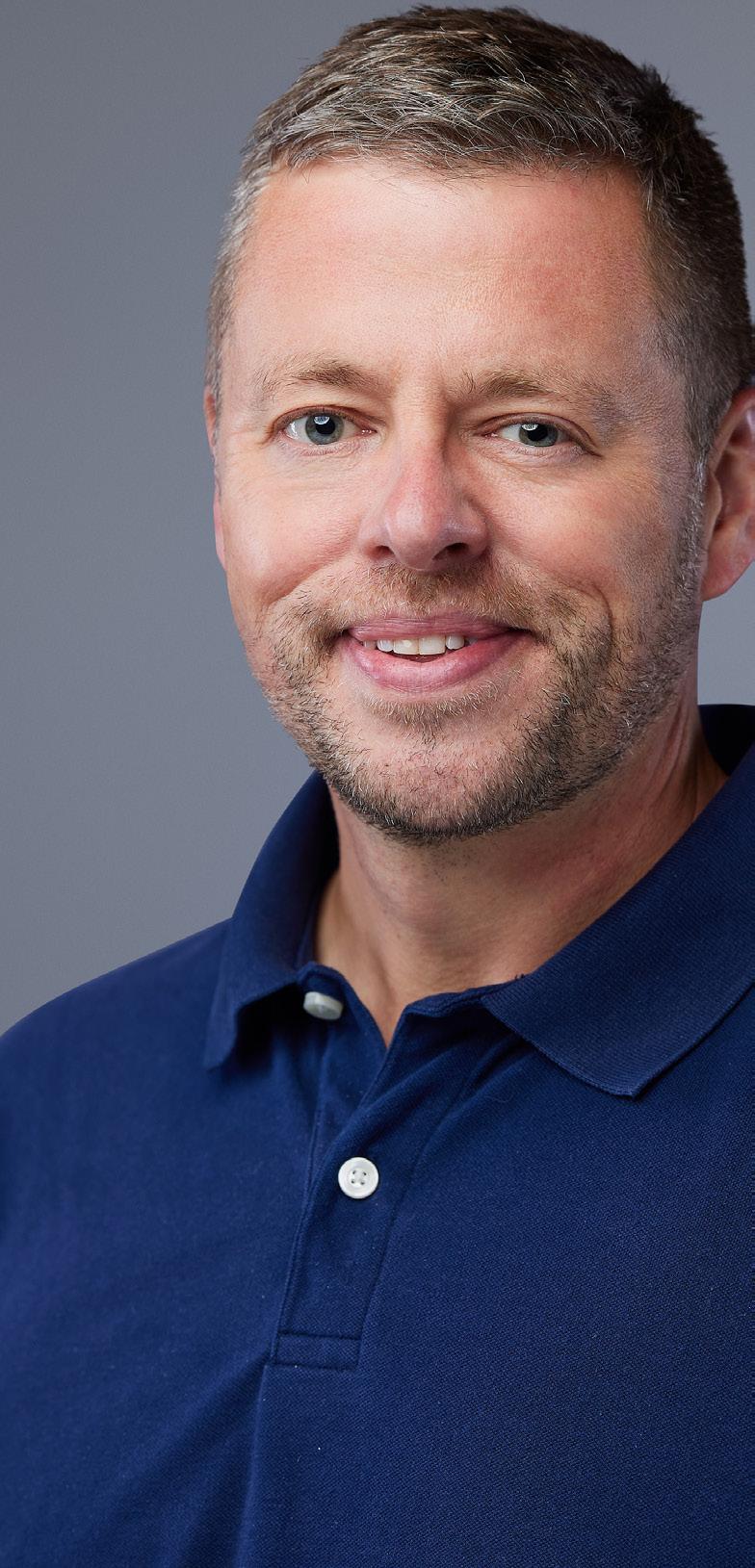
Education
This shift is made possible by the transition to a computer-based section-adaptive format. Students will start with a section of moderate difficulty; then, depending on how they perform on the first section, students proceed to an easier or more difficult section. Structuring the test in this way, the Digital SAT can provide similar information on student performance as the current SAT while taking about two thirds the time. The bottom line—if students want to try the Digital SAT, it is not overly timeconsuming to do so.
● The Digital SAT tests a wider variety of reading materials. While the current SAT has just a handful of longer reading passages, the reading selections on the Digital SAT will be no more than 150 words each and will be accompanied by a single question. Having many more short texts allows the SAT to test students on a much wider variety of reading genres. Poetry, humanities, and drama excerpts will have a place on the SAT alongside an array of other fiction and non-fiction selections. Students who perform well on the new Digital SAT will thus need to demonstrate proficiency in understanding material from across the academic spectrum.
● Students will have access to a variety of built-in tools. If a student left their calculator or watch at home on the current SAT, they would be at a significant disadvantage. Fortunately, on the Digital SAT, there will be a built-in stopwatch and Desmos™ calculator that students can use as needed. In addition, the redesigned test will have several elements of universal design embedded into its testing
interface, like the ability to zoom in on text, highlight selected words, and write annotations. Having all these robust tools built into the testing program will make the new Digital SAT a more user-friendly experience.
● Time management is less likely to be an obstacle. Students who find the current SAT to be challenging to finish are unlikely to find this to be the case on the new exam. According to the College Board, the Digital SAT is designed to focus on literacy and math achievement, not on test-taking speed. In fact, during the test design process, the College Board reduced the number of questions and increased the allotted section timing to be sure that students would not feel rushed. Based on the latest findings, 97 percent of students who have taken the Digital SAT have been able to complete all questions in a module with nearly seven minutes to spare.
● The new test will be more accessible for English-language learners. Students who do not speak English as their first language have sometimes found the following types of questions currently on the SAT to be challenging: figuring out the best idiomatic phrase to use, determining the proper tone of a writing selection, and working through lengthy mathematics word problems. The concepts tested on the Digital SAT are streamlined to focus on core concepts like punctuation, verb use, and transitional words. Additionally, the math word problems will not be as lengthy. With these adjustments, the Digital SAT will be better positioned to reliably assess college readiness skills.
60 Higher Education Digest March 2024
Based upon what the test maker has said and my own research as an experienced test prep instructor and educator, the newly redesigned Digital SAT gives colleges an excellent tool they can employ to assemble classes of students that are likely to succeed both in college and beyond
● The Landscape™ tool can provide helpful context to an application. With the recent Supreme Court decision about affirmative action, colleges are exploring new ways to ensure their students come from a diverse range of backgrounds. In addition to new supplemental application essay questions, colleges can utilize the new Landscape™ tool from the College Board to better contextualize student applications. The tool provides information about school and neighborhood factors that can affect students’ educational outcomes, like average college attendance, median family income, and housing stability data.
● The Digital SAT will help safeguard admissions standards. Grade inflation for high school students has become increasingly
elevated, with the average high school GPA increasing by “0.19 grade points, from 3.17 in 2010 to 3.36 in 2021, with the greatest grade inflation occurring between 2018 and 2021.” Such a shift makes high school transcripts less useful as a tool to differentiate among applicants. Additionally, the widespread use of generative artificial intelligence tools makes the job of college essay evaluators ever more difficult.
Based upon what the test maker has said and my own research as an experienced test prep instructor and educator, the newly redesigned Digital SAT gives colleges an excellent tool they can employ to assemble classes of students that are likely to succeed both in college and beyond. And securing a high score will be greatly advantageous to applicants, boosting their chances of getting in and securing meritbased aid.
61 Higher Education Digest March 2024

Navigating the UK International Higher Education Landscape
DrCherylYu, Director of International at the Jimmy Choo Academy
As a practitioner and researcher, Dr Cheryl Yu, Senior Fellow of Higher Education Academy, has over 17 years of work experience in international education, currently working as Director of International at the prestigious Jimmy Choo Academy. Before this, Cheryl worked as Interim Director of International Partnerships at the London College of Fashion; and Director of International Development and International Studies at the University for the Creative Arts where Dr Yu created the whole international department of over 50 staff and ran the English courses and international pathway programmes. Developed three and managed one overseas campus for UK universities in China, one overseas campus with an independent legal entity (joint University in China), and two joint institutes without independent legal representatives.
In a recent interview with Higher Education Digest, Dr. Cheryl discussed her experience as an educational consultant in the UK’s international higher education sphere. She shared her insights into how Chinese students are adapting to changes in the UK education system, building strong partnerships in education, and more.
Higher Education Digest
LEADER IN FOCUS
With a certain level of perceived or imagined depreciation of some UK qualifications and the increased accessibility of UK education for Chinese students, we have seen a wider spectrum of motivations, including ‘degree’ or ‘experience’ or both
Can you tell us about your journey and how you entered the UK international higher education arena? What motivated you to pursue a career in this field?
What happened to me was rather accidental to enter the international higher education field. I was in my final year of undergraduate study; I went to find my dissertation supervisor for support. He was at a meeting with some other staff, so I sat on the side and waited quietly. When he finished the meeting, one of the staff asked me if I was a staff member there. I said I was graduating then he told me that he worked for the University of Central Lancashire (UCLan), and they were looking for a new staff member to join their Guangzhou office. I said yes, I would be interested in this opportunity. since the moment in 2008, I have been working in the field since.
During the early stage of my career, I was quite heavily involved in the academic elements of international education, more specifically,
transnational education, supporting Chinese students on a UK degree delivered in China, with English as the medium of instruction.
I went to a top University in China to learn English, but I felt at that moment, these students really got a chance to develop their professional skills that I did not get, from my university degree.
I observed and experienced how the UCLan programs focused on knowledge (mind) but also skills, presentation and communication skills, teamwork, and deadlines. Importantly they learned through practice, and their educational experience seemed a lot more relevant to some elements of the employability in China.
Working with students has always been a very rewarding experience and a journey to see them grow and become my peers later on.
That is why I have continued my profession in this field. But some of my recent experience and academic research have also influenced my thinking in this space, to be more reflective and to be critical too.
63 Higher Education Digest March 2024
The international higher education arena is constantly evolving. What trends or changes have you observed during your career, particularly in relation to Chinese students studying in the UK? How have you adapted to these changes?
Last year, I did a research project with colleagues to investigate the changes in the ‘pulling’ factors of Chinese students in choosing to study in the UK, 20 years apart, between 2000 and 2020. We found out that, because of the introduction of ranking, such as Times Higher Education or QS ranking, Chinese students become a lot more sensitive towards the ranking. This correlates with other influencing factors, such as employability and the perceived value of a higher-ranked university. The change in the exchange rate (from 1 pound to 16 yuan in 2000 to now 1 pound to 8 yuan), the growing economy, the popularisation of the English language in China, the culture and heritage of the UK, and overall acceptance and understanding of studying abroad mean that we have seen a steady growth of Chinese students choosing the UK as their destination.
So, when studying in the UK becomes a ‘mass’ product, it loses its original prestige and
perceived value. During the last twenty years, we have seen a shift of paradigm from ‘studying in the UK’ to ‘studying at the top university in the UK’. With a certain level of perceived or imagined depreciation of some UK qualifications and the increased accessibility of UK education for Chinese students, we have seen a wider spectrum of motivations, including ‘degree’ or ‘experience’ or both.
So here, I would reflect on some lower-ranked universities that find it difficult to recruit Chinese students. My recommendation is to make explicit what you offer and have the right expertise to support you in your China strategy.
Building strong partnerships and collaborations is essential in the higher education arena. Can you share some examples of successful collaborations you have been involved in? How have these collaborations benefited both institutions and students?
Partnership is what I do and what I believe in. Working with agents or institutes, or students is, equally, a partnership, which is built on mutual
Under the current geopolitical environment, being Chinese does not make you so in demand as the education sector seems to follow the wider political agenda, which I believe is not always helpful
64 Higher Education Digest March 2024
respect, trust, and benefits. Even though we cannot equate respect with benefits, but they have to converge in a way to create impact or capital return.
I can share some of my Transnational Education experience where I co-funded two joint institutes with Chinese universities. At my last job at the University for the Creative Arts, I worked with Xiamen University to create a joint institute – the Institute of Creativity and Innovation, in Xiamen, currently with about 800 students. In a large-scale project as such, success depends on multiple factors, ranging from regional economic development direction which has an impact on the educational needs and the employability of your graduates, to institutional strategic alignments to have the leadership team’s support, to the effective communications between two universities across two cultures and finally to the people who have the right knowledge and attitude to make it happen.
For a Joint Institute as such, it has to be a mutually beneficial project where the benefits can be measured in financial figures or not.
I would say that for Xiamen University, this institute functions as a platform to further challenge and develop its staff in terms of knowledge and pedagogical thinking; it offers the right education for the local students who understand the local context in Xiamen and China but also are exposed to the UK educational philosophy too.
For the University for the Creative Arts, this marks a significant milestone in its internationalisation strategy.
Can you provide us with an overview of your role and expertise in educational consulting? How did you get started in this field?
My background is quite broad, really, from international students’ recruitment to TNE to teaching and learning, to student experience, and to strategy development.
I was in a position where I decided to leave my last job within days just before Christmas in 2022, not too long after I just returned from my maternity leave.
Leaving the job was a shock for me and I was not ready emotionally. So psychologically it took me a while to recover from that particular experience, and during this process, I was lucky enough to have a Coach and a mentor who supported me to reflect on what matters in life, what my passions for, and what I am good at.
So, I started my journey to work as a consultant. I started to knock on some doors and a lot of them said no to me of course. But I did not give up and kept trying. Fortunately, some opportunities came through and I started to get back on the field and I absolutely love it.
One of the many reflections that I had was –always give people an opportunity! You never know what they can offer you and how they can support you!
As a Chinese professional working in the UK international higher education arena, what unique perspectives or experiences do you bring to the table? How have these influenced your work and interactions within the industry? Under the current geopolitical environment, being Chinese does not make you so in demand
65 Higher Education Digest March 2024
as the education sector seems to follow the wider political agenda, which I believe is not always helpful.
At the moment, many UK universities put a ‘hold’ on their China operation, actively de-risking their China connections and collaborations, or worst scenario, positioning China as a ‘No’.
I believe there is a huge potential to collaborate with China now. And I know some UK universities are working on this proactively and strategically.
Being Chinese in the UK, as a practitioner and educator, my knowledge of the UK HE system and pedagogical inquiries allows me to create a powerful narrative of UK education for Chinese audiences, being students, parents, or universities.
Coming from China, understanding the local culture, many being subtle and unexplicit, speaking the language, and having accumulated the right connections across government agencies and university leadership teams have allowed me to navigate the system and make things happen.
Finally, I would also comment on the respect I have gained through my track record, and being professional and knowledgeable has made things easier to work with colleagues in China. When people respect you in China, they will work with you.
How have your cultural background and international experiences shaped your approach to working with diverse stakeholders in the higher education sector? What strategies do you employ to foster effective cross-cultural collaborations?
People coming from a shared place, nationally being Chinese, or regionally being from Sichuan
province, or even from a particular school, always have shared traits, being language, dialect, food, value, culture, and ideology.
For me, the important thing is to recognise these differences, be openminded, show curiosity and interest, and make an effort to understand others.
Fundamentally, I would start with being respectful and authentic and recognise that everyone is different as an individual.
This year, I went through a rather challenging time, as I mentioned above. However, I received so much support from colleagues in the sector globally, e.g., British, American, Malaysian, Chinese, Canadian, and the list goes on. They showed me compassion and kindness and kept on encouraging me and helping me. It has again taught me to be grateful and kind in our approach daily and kindness exists in our sector.
What advice do you have for aspiring educational consultants looking to enter this field? What skills or qualities do you believe are essential for success in this industry?
To work as a consultant requires us to be really on top of the game, and to be the most knowledgeable person in the room if we can. So, keep learning!
For a new consultant entering the space, rejection, expected to be a norm, is not an indicator of our capabilities. Consultancy work does not provide you with an imagined sense of stability, so you really need to keep reflecting on why you chose this route.
66 Higher Education Digest March 2024

Celebrating 75 Years of Excellence in Education What distinguishes us
• Eleven campuses in Puerto Rico, one online campus and three campuses in United States (Orlando, Tampa Bay and South Florida)
• First Doctor of Veterinary Medicine Program in Puerto Rico
• More than 240 careers in high demand areas (Health, Business, Engeneering, Education, Science and Technology and many others)
• Quali ed and committed faculty
• Accelerated and bilingual program for adult students
• Leading Business School in Latin America
• Advanced graduate and doctoral programs
• International specialized accreditations
• First and only doctorate in Naturopathic Medicine in Puerto Rico and the Caribbean
• Innovation and technology
• Excellence in student services
• Diversity of sports programs
uagm.edu
67 Higher Education Digest March 2024 Call Us Now
YEARS








 Sarath Shyam
Sarath Shyam




















































